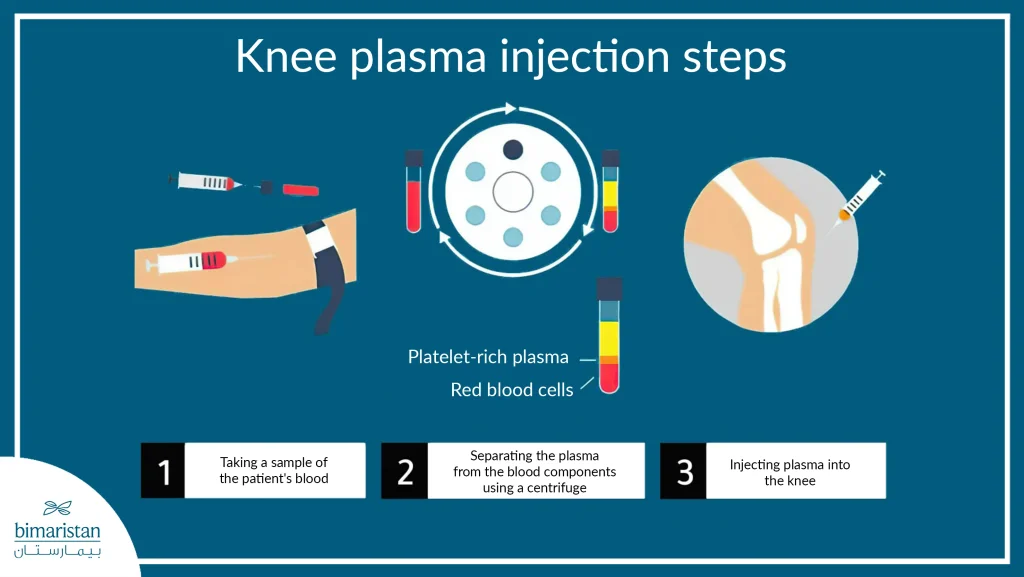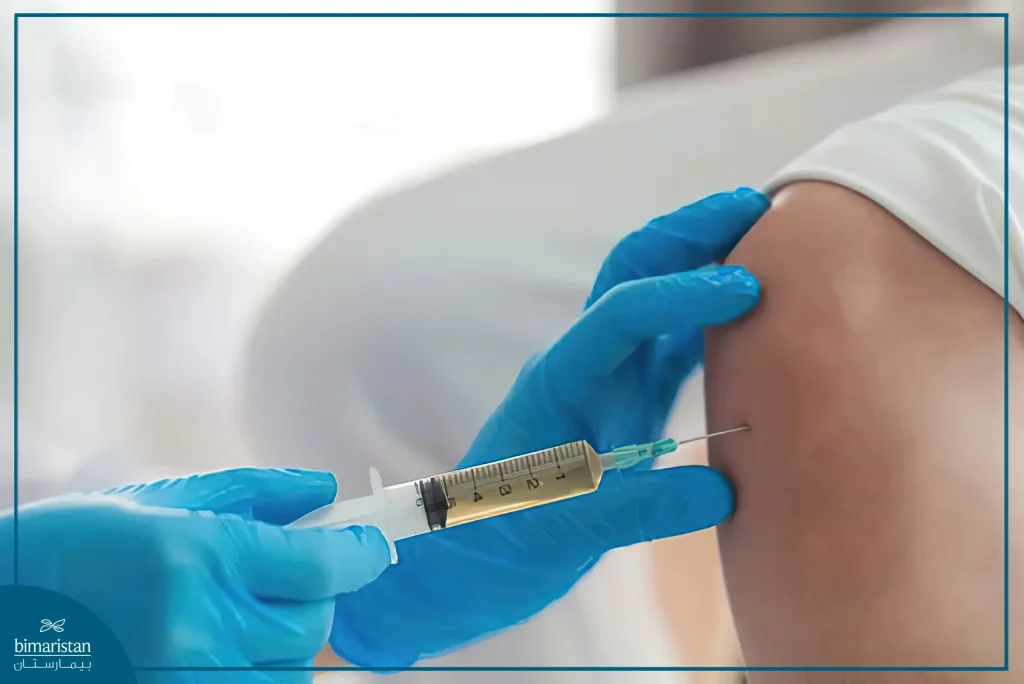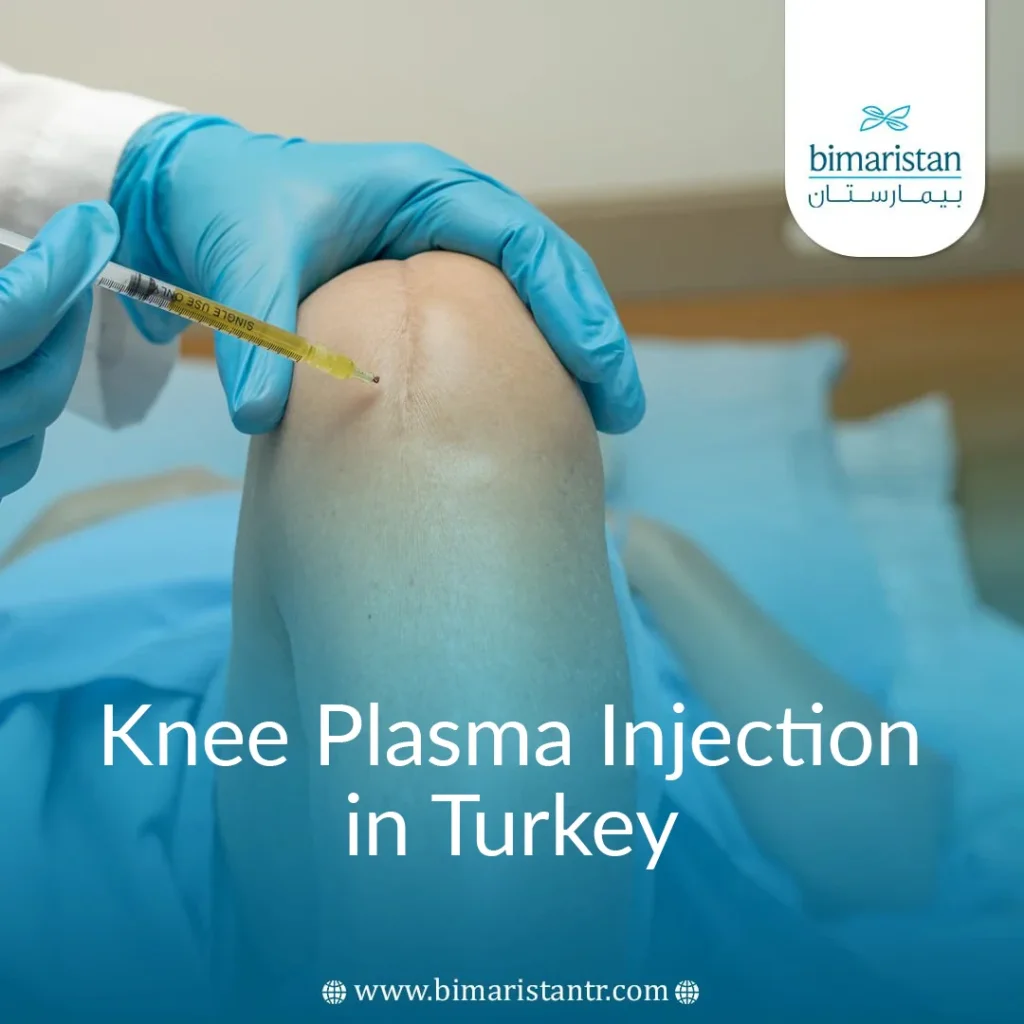Knee plasma injection is one of the promising treatments for alleviating joint inflammation pain and treating knee osteoarthritis. So, what is Platelet-Rich Plasma (PRP) injection, and when can you use it?
Although this method of knee treatment is still new, it holds promising results for many patients. Injection into the joint may serve as an alternative to more complex treatments like surgery.
Research is still ongoing regarding the effectiveness of human plasma in treating knee diseases. Contact us for a free consultation from our medical team regarding plasma therapy details, with the possibility of booking an appointment with the best doctors in Turkey at a reasonable price. Stay tuned to learn about the benefits, risks, and cost of knee plasma injections in Turkey.
How to Inject Plasma into the Knee
Human plasma contains platelets rich in proteins and growth factors that contribute to the renewal of body cells. Scientists believe that injecting these platelets into a specific area of the body can accelerate the healing and cellular regeneration process in that area.
Plasma is obtained from the patient’s body, which will undergo treatment, through a standard blood sample taken from the elbow. The sample is then placed in a special device that separates the plasma from other blood components.

The plasma is kept in syringes for later use by injecting it into the affected knee. The doctor may use ultrasound to guide the injection needle more accurately. What are the benefits and risks of this injection?
Benefits and risks of Knee Plasma Injection
Numerous studies have been conducted on the benefits of applying plasma to knee problems. Doctors have injected plasma into a group of individuals with various knee issues and have found the following benefits:
Plasma Injection for Arthritis Treatment
Undoubtedly, pain resulting from knee arthritis reduces the quality of life, especially in older adults. Knee plasma injection offers hope for alleviating this pain without the need for surgery.
According to a study conducted on arthritis patients, platelet-rich plasma injections significantly improved inflammation pain and thus increased and improved mobility in these individuals.
Plasma injections reduced the need for anti-inflammatory and pain-relieving medications. This is also one of the benefits of knee plasma therapy.
Injections are only performed in cases of mild to moderate knee arthritis. In severe stages of arthritis, knee joint replacement surgery is often the best treatment.

Knee Osteoarthritis Treatment
Osteoarthritis occurs due to damage to the cartilage and surrounding tissues of the joint. Plasma injection therapy treats knee osteoarthritis pain by repairing and restoring tissues in the injection area.
The effectiveness of treatment varies from person to person and depends on factors such as the patient’s overall health, the severity of the disease, as well as how the plasma is prepared and injected by the practitioner.
Knee osteoarthritis is a common problem among older adults, and a new method has emerged for treating osteoarthritis through stem cell transplantation. You can read more about joint treatment with stem cells.
Risks of Knee Plasma Injection
Fortunately, the rejection rate of plasma by your body and the formation of an immune response are almost negligible because the source of the sample is your own blood. However, there may be some complications from knee plasma injection that orthopedic surgeons fear, even though they are extremely rare, including:
- Inflammation at the injection site
- Pain and stiffness in the injected area
- Some people experienced dizziness and fainting
- Excessive sweating and increased heart rate
- No benefit from treatment
These side effects are rare but should be mentioned so that the patient is aware of all possibilities. Additionally, it should be noted that the experience of knee plasma injection remains relatively recent, and the long-term results and risks of this procedure have not yet been studied.
Tips After Knee Plasma Injection
Recovery after knee plasma injection usually takes about 4 to 6 weeks. Your doctor will give you some tips to facilitate and expedite recovery, including:
Apply ice to your knee for 20 minutes once every 3 hours during the first 3 days after the procedure.
Avoid anti-inflammatory drugs during the recovery period as they slow down the recovery process.
Take a break and avoid activities that put pressure on the knee.
Consult your doctor before returning to your daily activities.
My Experience with Knee Plasma Injection
“Bryan Zoll” shares his experience with knee plasma injection and how it had a positive impact on his life:
“Sports have always been an important part of my life. Since I was young, I have been playing hockey and running while lifting weights. In 2013, while I was running, I felt severe pain in my knee, so I went to an orthopedic doctor who told me after requesting an X-ray that I suffer from what is known as knee cartilage softening.
I tried various treatment methods like painkillers and physical therapy, but the knee pain persisted. My doctor suggested plasma injection therapy taken from my blood into my knee, and indeed we performed a PRP injection procedure. After about five weeks, I started to feel that the knee pain was noticeably decreasing to the point where I could climb stairs without feeling the previous pain I used to suffer from.
Knee Plasma Injection Prices
Plasma injection prices in Turkey usually start at around $750. This cost may increase depending on the condition of each patient and the number of injections needed to complete the treatment. Some may require more than one injection to complete the treatment.
This price is much lower than knee surgeries, which cost no less than $10,000. You can contact us for details on the cost and to guide you to the best treatment centers in Turkey that suit your condition. The hospital center offers a special discount for patients interested in knee plasma injections, with the possibility of requesting a free consultation through our website or by contacting us.
In conclusion, knee plasma injection has many benefits in treating various knee conditions. Although it may be associated with some risks, it is worth trying due to its ability to improve the quality of life for many patients, especially older adults suffering from arthritis inflammation.
References:
- Platelet-rich plasma injections for knee osteoarthritis, NICE.
- Intraarticular platelet-rich plasma injection in the treatment of knee osteoarthritis: review and recommendations.



